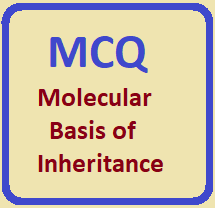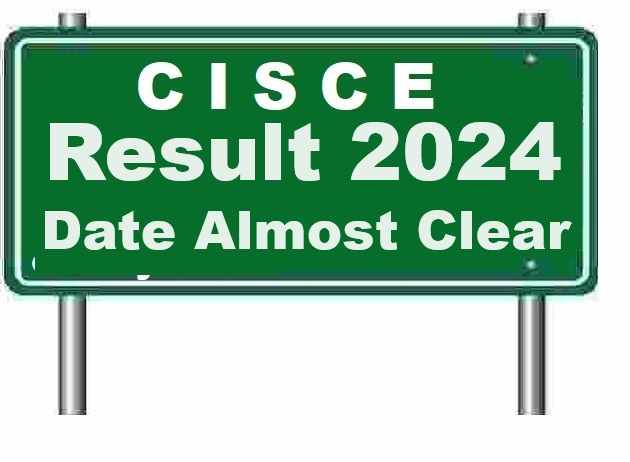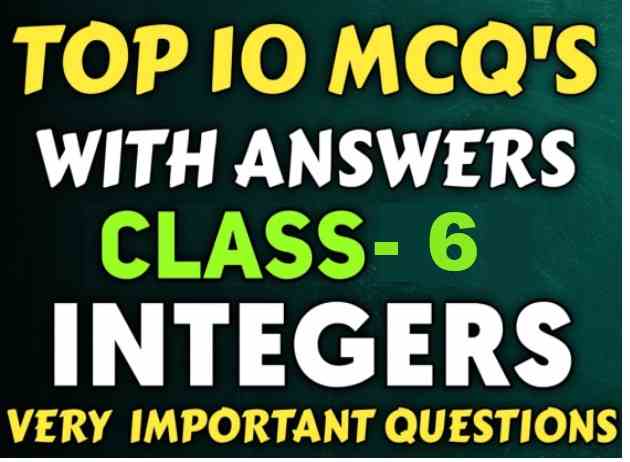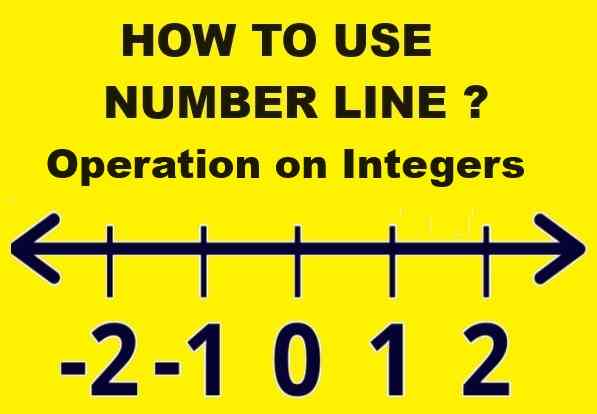MCQ Type Question for ISC Class 12 Biology Molecular Basis of Inheritance
| Board | ISC |
| Class | 12th (XII) |
| Subject | Biology |
| Chapter Name |
Molecular Basis of Inheritance |
| Syllabus | on bifurcated syllabus (after reduction) |
| bifurcated pattern |
Semester-1 |
| Session | 2021-22 |
| Topic | MCQ / Objective Type Question |
ISC Class-12 Biology MCQ Molecular Basis of Inheritance
Question 1: Initiation codon of protein synthesis (in eukaryotes) is
(a) GUA
(b) GCA
(c) CCA
(d) AUG
Answer: (d) AUG
Question 2: In eukaryotes, mRNA is synthesized with the aid of
(a) RNA polymerase III.
(b) RNA polmerase II.
(c) RNA polymerase I.
(d) reverse transcriptase.
Answer: (b) RNA polmerase II.
Question 3: Lactose operon produces enzymes
(a) b-galactosidase, permease and glycogen synthetase.
(b) b-galactosidase, permease and transacetylase.
(c) permease, glycogen synthetase and transacetylase.
(d) b-galactosidase, permease and phosphoglucose isomerase.
Answer: (b) b-galactosidase, permease and transacetylase.
Question 4: In Hershey and Chase experiments, radioactive 32P was used to culture bacteriophages which resulted in radioactive
Question 5: Commonly used vectors for human genome sequencing are:
Answer: (b) BAC and YAC
Question 6: Nucleic acids are polymer of
(a) Nucleosides
(b) Proteins
(c) Glycoproteins
(d) Nucleotides
Answer: (d) Nucleotides
Question 7: DNA structure was discovered by
(a) Weismann
(b) Watson and Crick
(c) Har Gobind Khorana
(d) Sutton
Answer: (b) Watson and Crick
Question 8: Enzyme responsible for DNA replication\
(a) Polymerase
(b) Proteolytic
(c) Ligase
(d) Carboxylase
Answer: (a) Polymerase
Question 9: In a DNA strand the nucleotides are linked together by
(a) glycosidic bonds
(b) phosphodiester bonds
(c) peptide bonds
(d) hydorgen bonds.
Answer: (b) phosphodiester bonds
Question 10: The net electric charge on DNA and histones is
(a) both positive
(b) both negative
(c) negative and positive, respectively
(d) zero.
Answer: (c) negative and positive, respectively
Question 11: The human chromosome with the highest and least number of genes in them are respectively
(a) chromosome 21 and Y
(b) chromosome 1 and X
(c) chromosome 1 and Y
(d) chromosome X and Y.
Answer: (c) chromosome 1 and Y
Question 12: Who amongst the following scientist had no contribution in the development of the double helix model for the structure of DN A ?
(a) Rosalind Franklin
(b) Maurice Wilkins
(c) Erwin Chargaff
(d) Meselson and Stahl
Answer: (b) Maurice Wilkins
Question 13: Represser Lac-Operon protein attached to:
(a) Operator
(b) Inducer
(c) Regulator
(d) β-Glacto sidase
Answer: (b) Inducer
Question 14: Following is important in Ïranscription:
(a) DNA Methylase
(b) CAAT Box
(c) Promotar
(d) DNA Polymerase
Answer: (d) DNA Polymerase
Question 15: In eukaryotes which of the following is removed from initially transcribed RNA before it is transported to the cytoplasm for translation ?
(a) Intron
(b) 3′ Poly A tail
(c) Ribosome binding site
(d) 5′ cap
Answer: (a) Intron
Question 16: The process of splicing in eukaryotes :
(a) is reminiscent of antiquity
(b) represents dominance of RNA world
(c) is an indicator of the complexity of human genome
(d) is a legacy of organic evolution
Answer: (b) represents dominance of RNA world
Question 17: Cistron is
(a) Functional unit of RNA
(b) Non-functional unit of RNA
(c) Functional unit of DNa that specifies a polypeptide chain
(d) Non-functional unit of DNA
Answer: (c) Functional unit of DNa that specifies a polypeptide chain
Question 18: Transcription is the formation of
(a) mRNA
(b) tRNA
(c) rRNA
(d) Protein
Answer: (a) mRNA
Question 19: The RNA polymerase holoenzyme transcribes:
(a) the structural gene and the terminator regions
(b) the structural gene only
(c) the promoter, and the
(d) the promoter, structural gene and the terminator region
Answer: (a) the structural gene and the terminator regions
Question 20: If the base sequence of a codon in mRNA is 5′-AUG-3′, the sequence of tRNA pairing with it must be
(a) 5′ – CAU – 3′
(b) 5′ – AUG – 3′
(c) 5′ – GUA – 3′
(d) 5′ – UAC – 3′
Answer: (a) 5′ – CAU – 3′
Question 21: The amino acid attaches to the tRNA at its:
(a) 3′ – end
(b) 5′ – end
(c) Anti codon site
(d) DHU loop
Answer: (a) 3′ – end
Question 22: To initiate translation, the mRNA first binds to
(a) The smaller ribosomal sub-unit
(b) The larger ribosomal sub-unit
(c) The whole ribosome
(d) No such specificity exists
Answer: (a) The smaller ribosomal sub-unit
Question 23: Which of the following steps in transcription is catalysed by RNA polymerase ?
(a) Initiation
(b) Elongation
(c) Termination
(d) All of the above
Answer: (d) All of the above
Question 24: Control of gene expression takes place at the level of
(a) DNA-replication
(b) transcription
(c) translation
(d) none of the above.
Answer: (b) transcription
Question 25: If the sequence of initrogen bases of the coding strand of DNA in a transcription unit is: 5’ – ATGAATG – 3’, the sequence of bases in its RNA transcript would be
(a) 5’ – AUG A AUG – 3’
(b) 5’ – UACUU AC – 3’
(c) 5’ – CAUUCAU – 3’
(d) 5’ – GUAAGUA – 3’.
Answer: (d) 5’ – GUAAGUA – 3’.
Question 26: The RNA polymerase holocnzyme transcribes
(a) the promoter, structural gene and the terminator region.
(b) the promoter and the terminator region
(c) the structural gene and the terminator region
(d) the structural gene only.
Answer: (b) the promoter and the terminator region
Question 27: The amino acid attaches to the tRNA at its
(a) 5’- end
(b) 3’ – end
(c) anticodon site
(d) DHUloop.
Answer: (b) 3’ – end
Question 28: To initiate translation, the wiRNA first bind to
(a) the smaller ribosomal sub-unit
(b) the larger ribosomal sub-unit
(c) the whole ribosome
(d) no such specificity exists.
Answer: (a) the smaller ribosomal sub-unit
Question 29: In DNA helix:
(a) Quadrate structure
(b) Polarity
(c) Antiparallel Polarity
(d) Disuiphide bond
Answer: (c) Antiparallel Polarity
Question 30: During splicing axon attached and inducer enzyme for reaction:
(a) RNA Ligase
(b) RNA Catalase
(c) RNA permease
(d) RNA poloymerase
Answer: (b) RNA Catalase
Question 31: In prokaryotes, the predominant site for control of gene expression is the :
(a) transcription initiation
(b) processing level
(c) transport of mRNA
(d) translation level
Answer: (a) transcription initiation
Question 32: In E. colt, the lac operon gets switched on when
(a) lactose is present and it binds to the repressor
(b) repressor binds to operator
(c) RNA polymerase binds to the operator
(d) lactose is present and it binds to RNA polymerase.
Answer: (a) lactose is present and it binds to the repressor
Question 33: In DNA strand, the nucleotides are linked together by
(a) glycosidic bonds
(b) phosphodiester bonds
(c) peptide bonds
(d) hydrogen bonds.
Answer: (b) phosphodiester bonds
Question 34: If a double stranded DNA has 20% of cytosine, what will be the percentage of adenine in it ?
(a) 20%
(b) 40%
(c) 30%
(d) 60%
Answer: (c) 30%
Question 35: During DNA synthesis formed segment is:
(a) Polymerase fragment
(b) RNA fragment
(c) Okazaki fragment
(d) RNA Primer
Answer: (c) Okazaki fragment
Question 38: In a give DNA segment ATC ACC AGG ACC CCA ACA, the first base gets mutated. The effect of this on coding by the DNA segment will result in :
(a) One amino acid less in protein
(b) No change in the sequence
(c) Complete change in the type and sequence of amino acid
(d) Change in first amino acid only
Answer: (b) No change in the sequence
Question 39: In Hershey and Chase experiment, what finding led to the conclusion that DNA is the genetic material ?
(a) The presence of radioactivity in the bacteria when 35S was used.
(b) The presence of radioactivity in the supernatant when 35S was used.
(c) The presence of radioactivity in the bacteria when 32P was used.
(d) The presence of radioactivity in the supernatant when 32P was used
Answer: (c) The presence of radioactivity in the bacteria when 32P was used.
Question 40: The element required for the activation of DNA and DNA polymerase is
(a) Ca2+
(b) Mg2+
(c) K+
(d) Cu2+
Answer: (b) Mg2+
Question 41: The first gene isolated by shapiroet-al in 1969 was the gene of
(a) Insulin gene of .mouse
(b) Nitrogenase of cynobacteria
(c) Alamine of tRNA of yeast
(d) Lac operon of E.Coli
Answer: (d) Lac operon of E.Coli
Question 42: Synthesis of DNA from RNA is explained by
(a) central dogma reverse
(b) reverse transcription
(c) feminism
(d) all of these.
Answer: (d) all of these.
Question 43: Histone proteins are
(a) basic, negatively charged
(b) basic, positively charged
(c) acidic, positively charged
(d) acidic, negatively charged
Answer: (b) basic, positively charged
Question 44: The structure in chromatin seen as ‘beads-on string’ when viewed under electron microscope are called
(a) nucleotides
(b) nucleosides
(c) histone octamer
(d) nucleosomes.
Answer: (d) nucleosomes.
Question 45: Find out the wrong statement about heterochromatin,
(a) It is densely packed
(b) It stains dark.
(c) It is transcriptionally active.
(d) It is late replicating.
Answer: (c) It is transcriptionally active.
Question 46: DNA repairing is done by:
(a) By DNA polymerase I
(b) By DNA Polymerase II
(c) Both (a) and (b)
(d) By Ligase
Answer: (b) By DNA Polymerase II
Question 47: A ribotide is made up of:
(a) Ribose + Phosphate + Uracil
(b) Deoxribose + Uracil + Phosphate
(c) Thymine + Ribose + Phosphate
(d) Deoxyribpse + Phosphate + Adenine
Answer: (a) Ribose + Phosphate + Uracil
Question 48: the enzyme involved in transcription is:
(a) DNA Polymerase I
(b) DNA Polymerase II
(c) RNA Polymerase
(d) DNA Polymerase
Answer: (d) DNA Polymerase
Question 49: The process of transofrmation is not affected by which of the following enzymes ?
A. DNase
B. RNase
C. Peptidase
D. Lipase
(a) A, B
(b) A, B, C, D
(c) B, C, D
(d) A, B, C
Answer: (c) B, C, D
Question 50: The three codons which result in the termination of polypeptide chain synthesis are
(a) UAA, UAG, GUA
(b) UAA, UAG, UGA
(c) UAA, UGA, UUA
(d) UGU,UAG,UGA
Answer: (b) UAA, UAG, UGA
Question 51: The approximate life span of mRNA is
(a) 2 hours
(b) 2 minutes
(c) 2 seconds
(d) None of the above
Answer: (b) 2 minutes
Question 52: Topoisomerase is involved in
(a) Producing RNA primer
(b) Joining of DNA segment
(c) Producing nick in DNA
(d) Separation of DNA strands
Answer: (c) Producing nick in DNA
Question 53: Select the incorreclty matched pair.
(a) Initation codons – AUG,GUG
(b) Stop codons – UAA, UAG, UGA
(c) Methionine – AUG
(d) Anticodons – mRNA
Answer: (d) Anticodons – mRNA
Question 54: Amino acid acceptor end of tRNA lies at
(a) 5’ end
(b) 3’ end
(c) T VC loop
(d) DHUloop.
Answer: (b) 3’ end
Question 55: Which RNA carries the amino acids from the amino acid pool to mRnA during protein synthesis ?
(a) rRNA
(b) mRNA
(c) /RNA
(d) hnRNA
Answer: (c) /RNA
Question 56: During translation, activated amino acids get linked to tRNA. This process is commonly called as
(a) charging of tRNA
(b) discharging of tRNA
(c) aminoacylation of tRNA
(d) both (a) and (c)
Answer: (b) discharging of/RNA
-: End of MCQ Molecular Basis of Inheritance for ISC Class 12 Biology :-
-: also visit :-
- ISC Class-12 Text book Solutions, Notes , Syllabus, Paper
- MCQ Type Questions ISC Class-12 Semester-1 Session 2021-22
Please share with your ISC friends if it is helpful
Thanks




